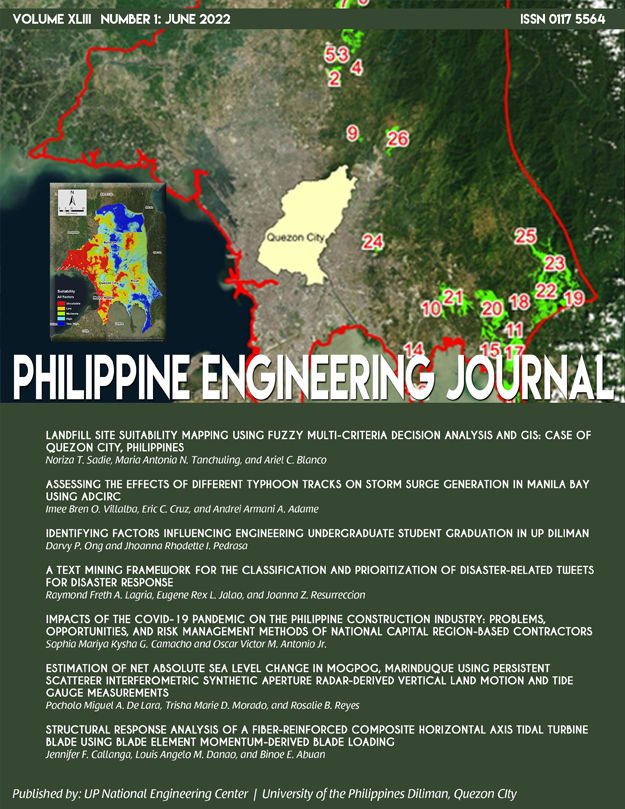Estimation of Net Absolute Sea Level Change in Mogpog, Marinduque using Persistent Scatterer Interferometric Synthetic Aperture Radar-derived Vertical Land Motion and Tide Gauge Measurements
Abstract
Sea level change can bring about various coastal hazards. For this reason, studies on sea level change are important in planning for the mitigation of risks caused by the said phenomenon. This research estimates the relative and net absolute sea level change in Mogpog, Marinduque using tide gauge (TG) measurements, Global Navigation Satellite System (GNSS) observations, and Persistent Scatterer Interferometric Synthetic Aperture Radar (PSInSAR) technique. Also, the vertical land motion (VLM) was investigated to determine if sea level measurements are contaminated by it. Sentinel-1 radar images in ascending and descending geometries were processed to determine the coherence, and line-of-sight (LOS) displacements and velocities of the persistent scatterer (PS) points. The PSInSAR results were validated using LOS converted GNSS data at the nearest Active Geodetic Network (AGN) station. The correlation obtained between PSInSAR and GNSS data were 0.761 and 0.796 for ascending and descending, respectively. Due to this high correlation, the PSInSAR derived VLM near the tide gauge was used in the absence of a collocated GNSS receiver at the tide gauge. The net absolute sea level change was computed by adding the contribution of VLM. The VLM rate near the Balanacan tide gauge station from PSInSAR was -3.822 ± 0.713 mm/yr. The relative sea level rate extracted from the tide gauge readings from 2007 to 2020 was 0.23 ± 0.63 mm/yr. Assuming a linear rate resulting from both datasets, the net absolute sea level change was estimated at -3.592 ± 0.951 mm/yr. The negative net absolute sea level trend was due to the strong influence of El Nino during this short period of observation. The result showed how VLM masked the actual sea level trend during the period of observation.
Keywords — GNSS, Net Absolute Sea Level Change, PSInSAR, Relative Sea Level Change, VLM


